Abstract
Disputing and talking-out behaviors of individual pupils and entire classroom groups in special education classes and regular classes from white middle-class areas and from all black poverty areas ranging from the first grade to junior high school were studied. The classroom teacher in each case acted as the experimenter and as an observer. Various means of recording behaviors were used and reliability of observation was checked by an outside observer, another teacher, a teacher-aide, a student, or by using a tape recorder. Observation sessions varied from 15 min to an entire school day. After baseline rates were obtained, extinction of inappropriate disputing or talking-out behaviors and reinforcement of appropriate behavior with teacher attention, praise and in some cases a desired classroom activity or a surprise at the end of the week brought a decrease in undesired verbalizations. A reversal of contingencies brought a return to high levels of inappropriate talking with a return to low levels when reinforcement for appropriate talking was reinstated. The experiments demonstrated that teachers in a variety of classroom settings could obtain reliable observational records and carry out experimental manipulations successfully using resources available in most schools.
Full text
PDF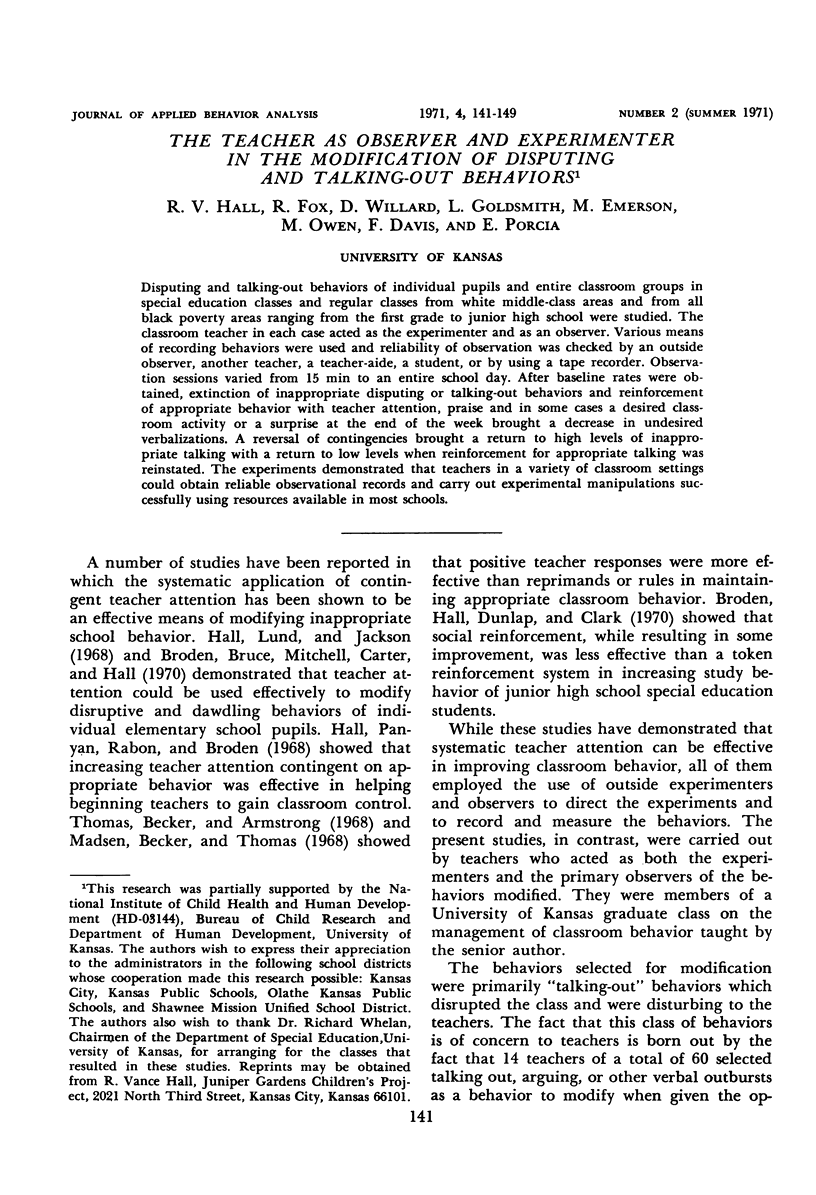
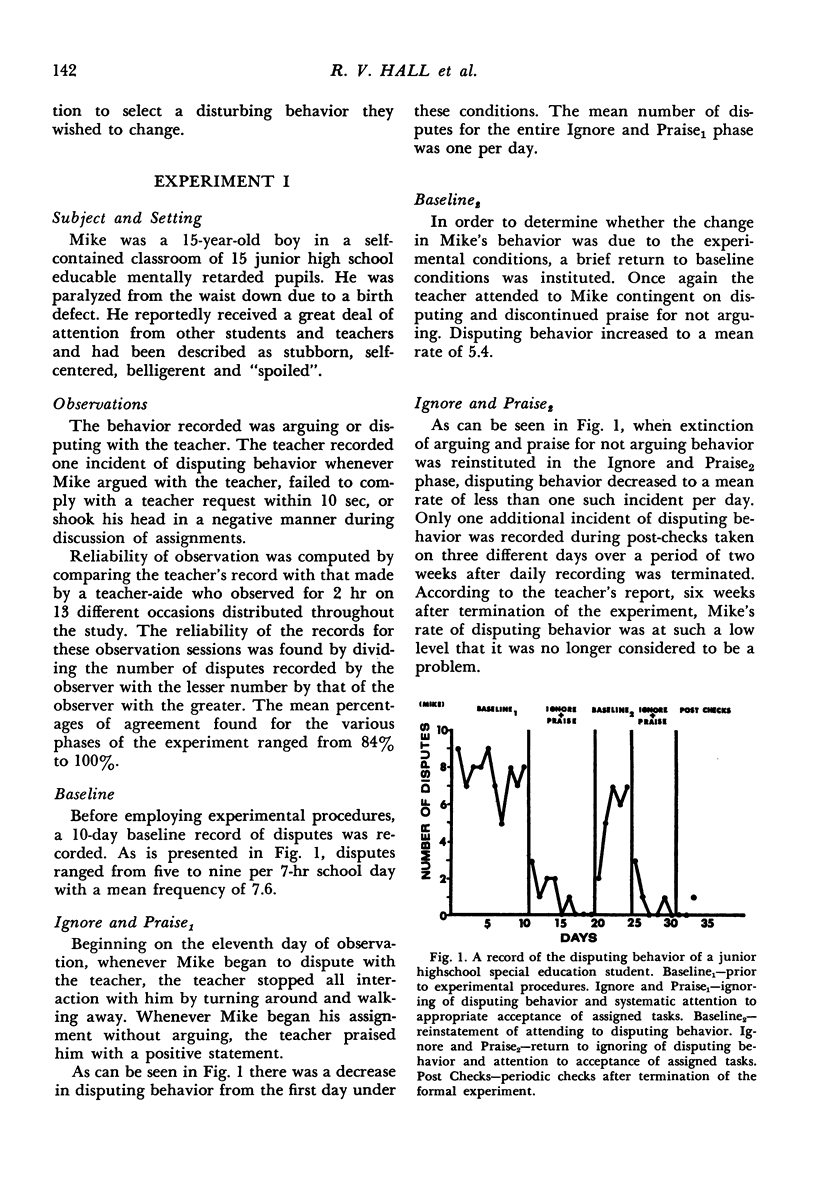
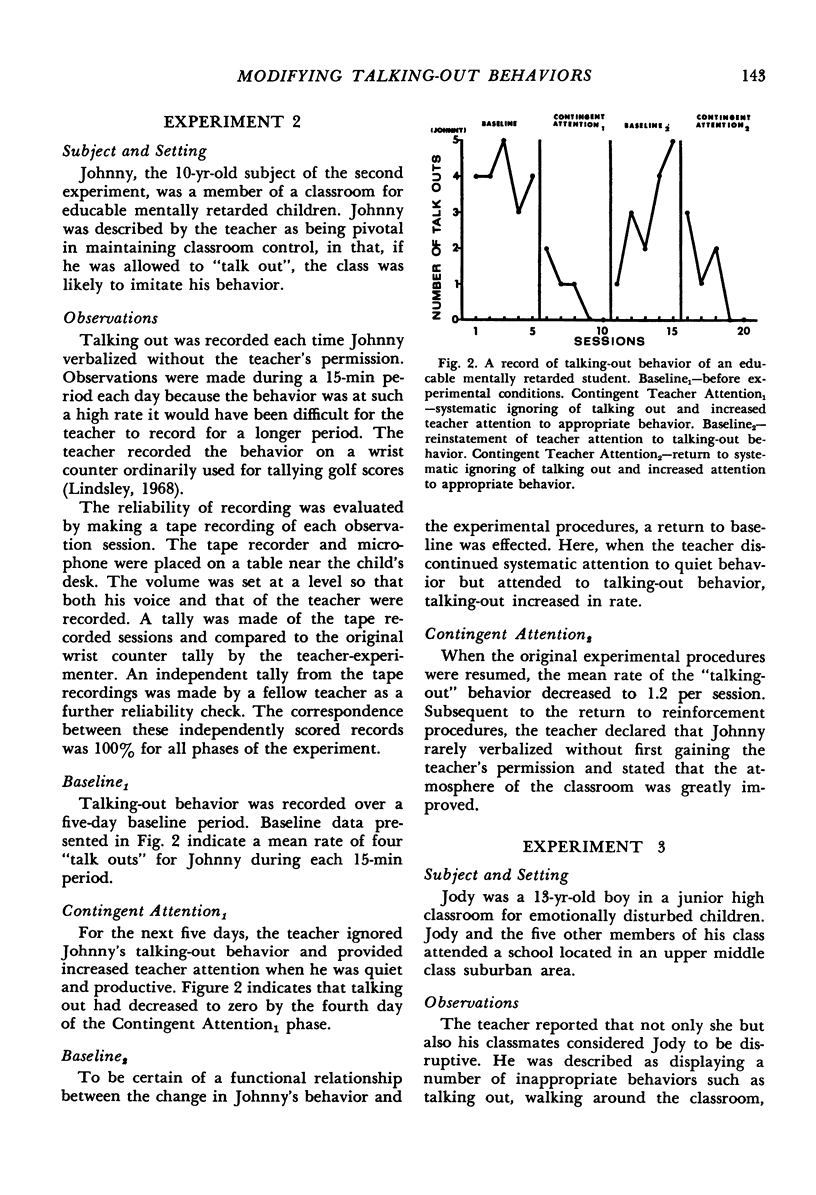
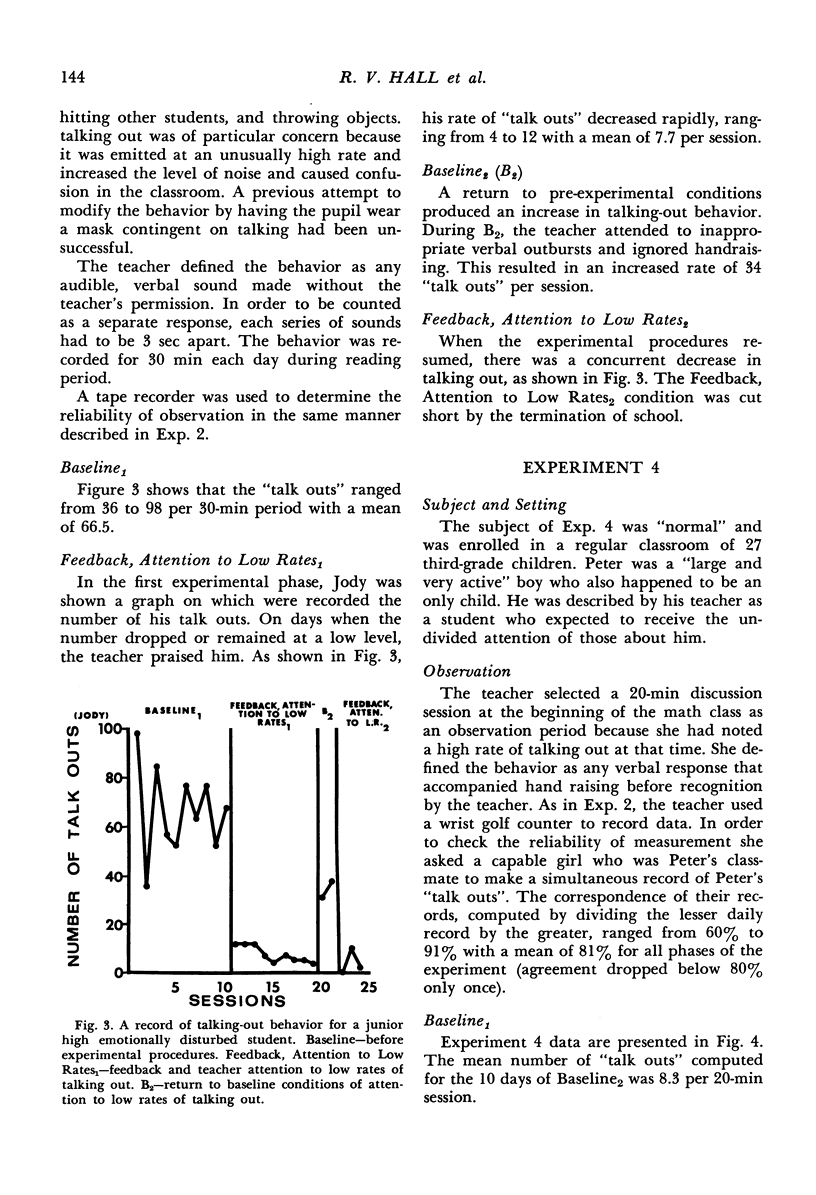
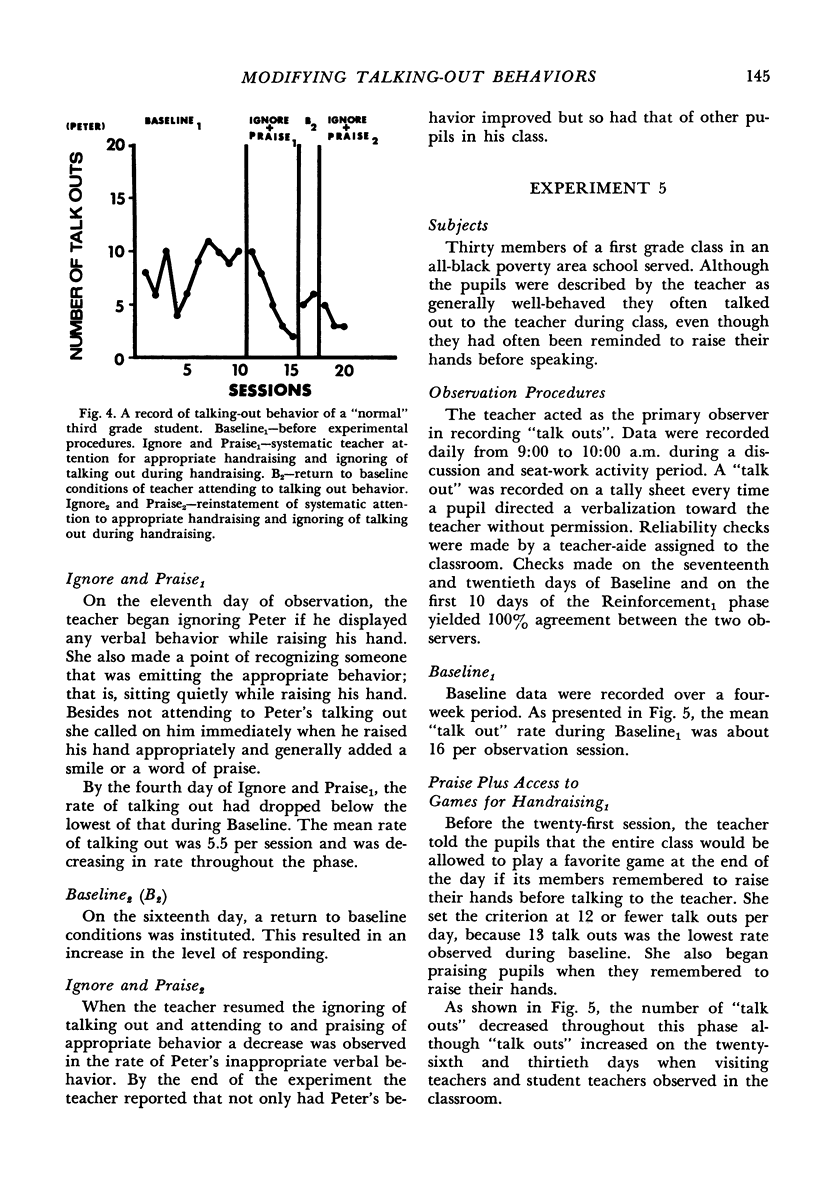
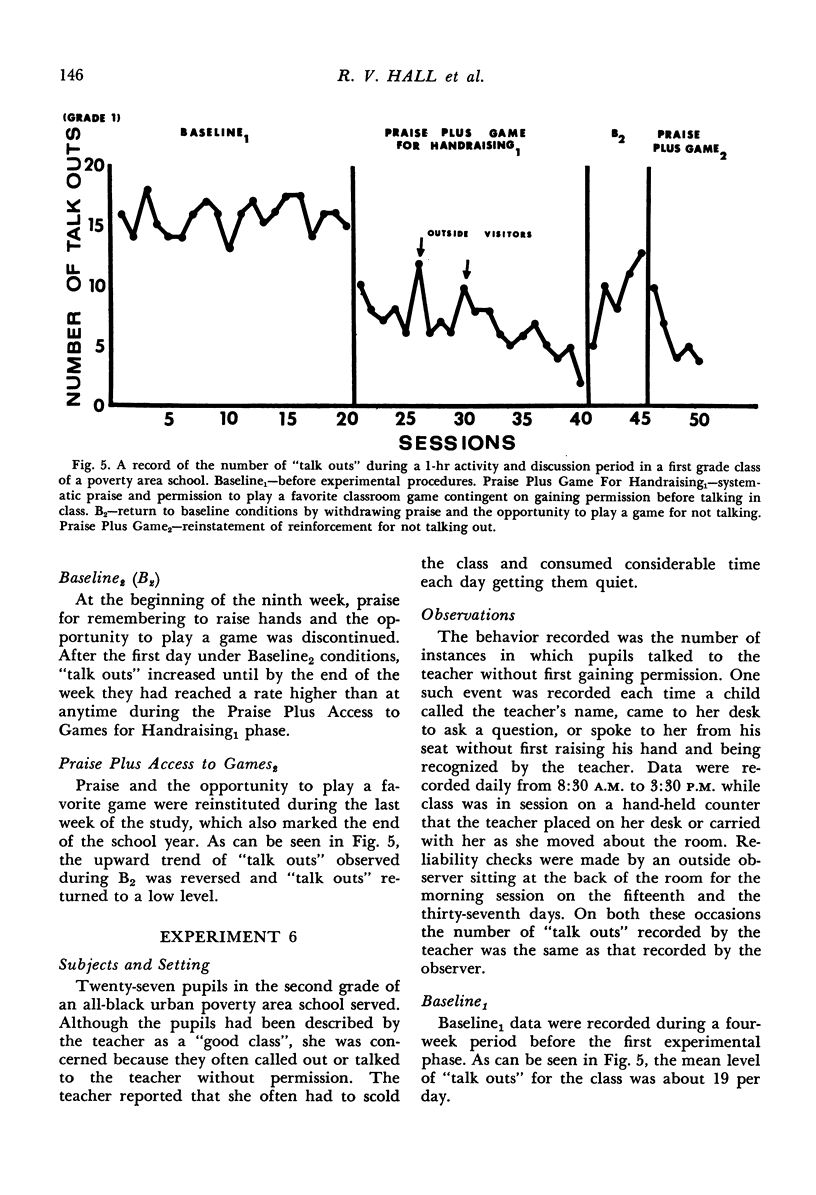
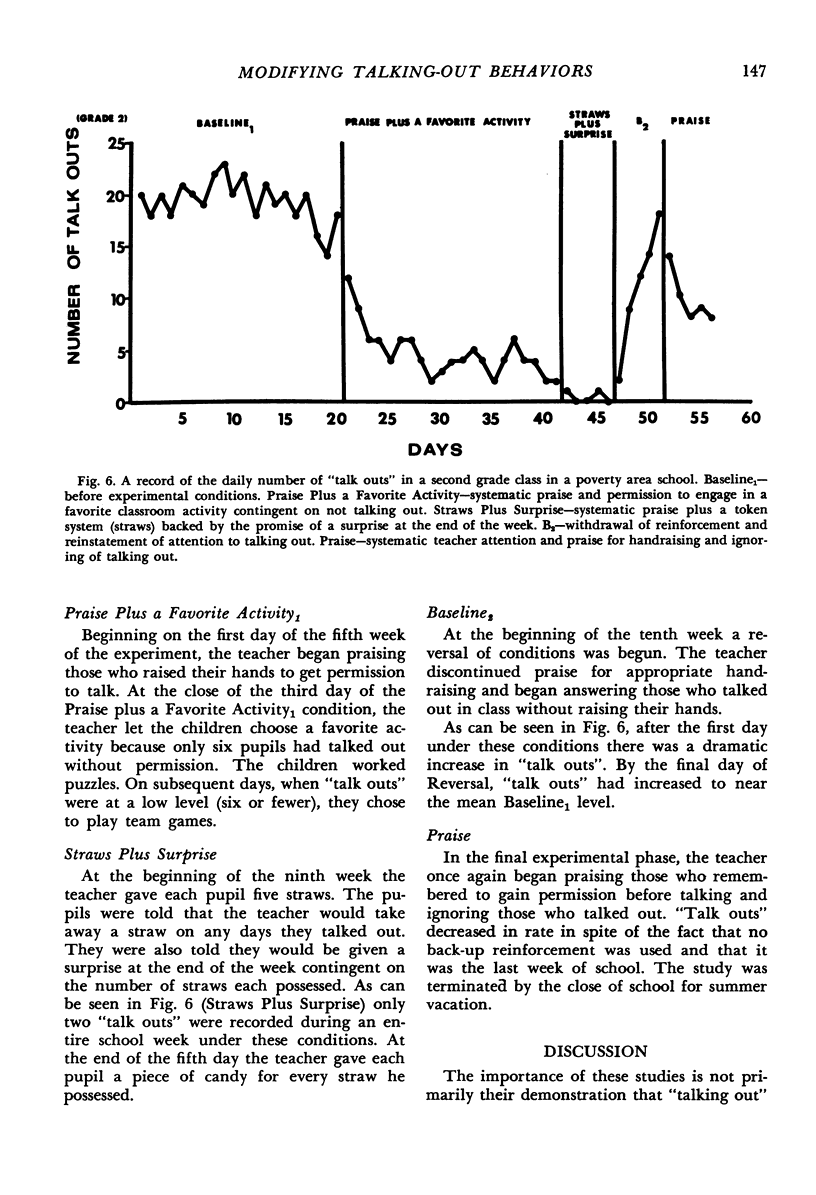
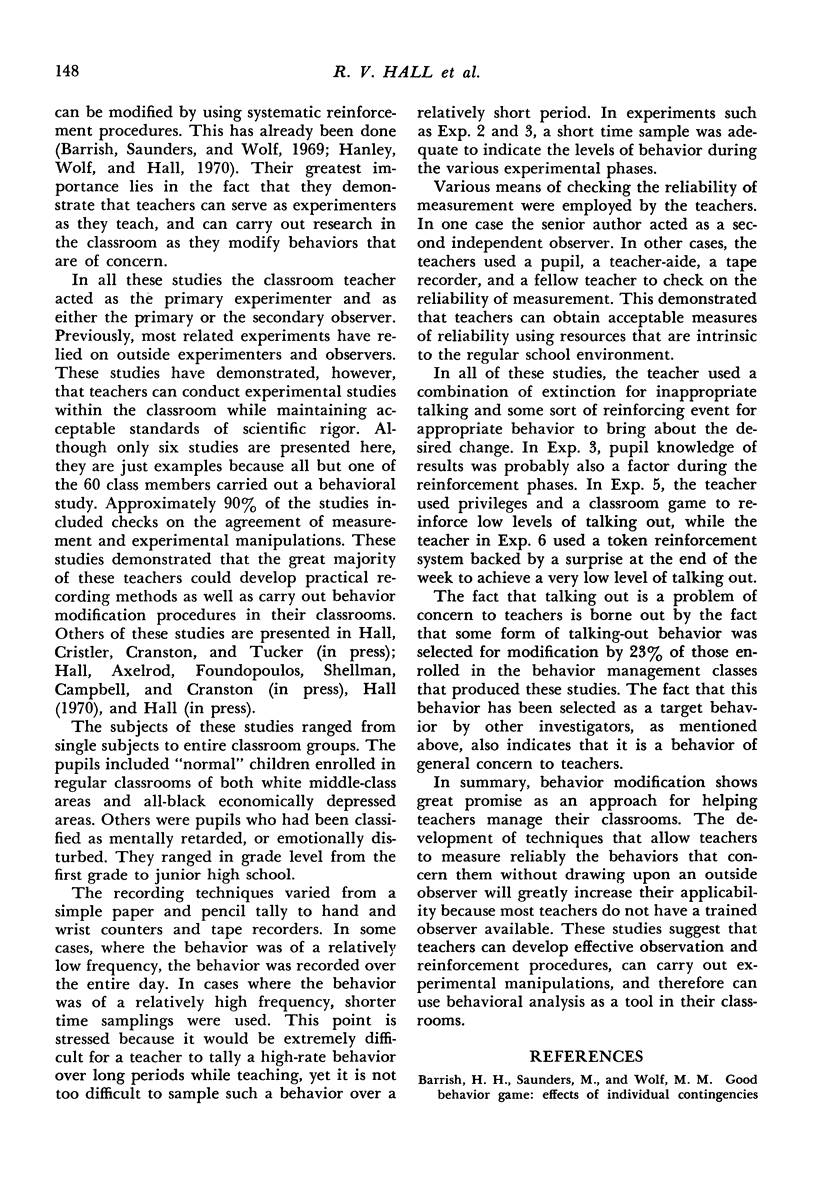

Selected References
These references are in PubMed. This may not be the complete list of references from this article.
- Barrish H. H., Saunders M., Wolf M. M. Good behavior game: effects of individual contingencies for group consequences on disruptive behavior in a classroom. J Appl Behav Anal. 1969 Summer;2(2):119–124. doi: 10.1901/jaba.1969.2-119. [DOI] [PMC free article] [PubMed] [Google Scholar]
- Broden M., Hall R. V., Dunlap A., Clark R. Effects of teacher attention and a token reinforcement system in a junior high school special education class. Except Child. 1970 Jan;36(5):341–349. [PubMed] [Google Scholar]
- Hall R. V., Lund D., Jackson D. Effects of teacher attention on study behavior. J Appl Behav Anal. 1968 Spring;1(1):1–12. doi: 10.1901/jaba.1968.1-1. [DOI] [PMC free article] [PubMed] [Google Scholar]
- Hall R. V., Panyan M., Rabon D., Broden M. Instructing beginning teachers in reinforcement procedures which improve classroom control. J Appl Behav Anal. 1968 Winter;1(4):315–322. doi: 10.1901/jaba.1968.1-315. [DOI] [PMC free article] [PubMed] [Google Scholar]
- Lindsley O. R. A reliable wrist counter for recording behavior rates. J Appl Behav Anal. 1968 Spring;1(1):77–78. doi: 10.1901/jaba.1968.1-77. [DOI] [PMC free article] [PubMed] [Google Scholar]
- Madsen C. H., Becker W. C., Thomas D. R. Rules, praise, and ignoring: elements of elementary classroom control. J Appl Behav Anal. 1968 Summer;1(2):139–150. doi: 10.1901/jaba.1968.1-139. [DOI] [PMC free article] [PubMed] [Google Scholar]
- Thomas D. R., Becker W. C., Armstrong M. Production and elimination of disruptive classroom behavior by systematically varying teacher's behavior. J Appl Behav Anal. 1968 Spring;1(1):35–45. doi: 10.1901/jaba.1968.1-35. [DOI] [PMC free article] [PubMed] [Google Scholar]


